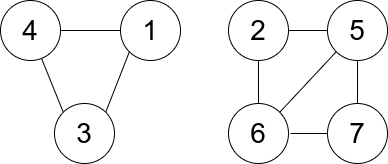A list of user ids + IPs, a list of user ids who have made purchases, a list of advertisement
clicks with user IPs.
Each user id has at most 1 IP.
Output: for each ad, output the number of clicks and the number of purchases.
completed_purchase_user_ids = ["123"]
ad_clicks = [
#"IP_Address,Time,Ad_Text",
"127.0.0.1,2011-01-03 09:21:22,black pen"]
all_user_ips = [
#"User_ID,IP_Address",
"123,127.0.0.1"]
输出:
black pen, 1 click, 1 purchase
题目大意:
给定购买记录,click记录,ip地址。求每个产品点击数和购买次数
解题思路:
此题比较直观,点击数直接可以从click记录中获得,购买次数就是将三个表格join一起获得
解题步骤:
N/A
注意事项:
Python代码:
1
2
3
4
5
6
7
8
9
10
11
12
13
14
15
16
17
18
19
20
21
22
23
24
25
26
27
28def get_ad_clicks_purchases(self, completed_purchase_user_ids, ad_clicks, all_user_ips):
# get clicks
product_to_clicks = collections.defaultdict(int)
for ad_click in ad_clicks:
parts = ad_click.split(',')
product_to_clicks[parts[2]] += 1
# get purchases
userid_to_ip = collections.defaultdict(str)
for all_user_ip in all_user_ips:
parts = all_user_ip.split(',')
userid_to_ip[parts[0]] = parts[1]
ip_to_product = collections.defaultdict(str)
for ad_click in ad_clicks:
parts = ad_click.split(',')
ip_to_product[parts[0]] = parts[2]
product_to_purchase = collections.defaultdict(int)
for user_id in completed_purchase_user_ids:
ip = userid_to_ip[user_id]
product = ip_to_product[ip]
product_to_purchase[product] += 1
res = []
for product, click in product_to_clicks.items():
res.append((product, click, product_to_purchase[product]))
return res
算法分析:
时间复杂度为O(n + m + p),空间复杂度O(n + m + p), n, m, p分别每个表的大小








